We’re currently living in a new golden age of horror—social horror, folk horror, body horror, haunted house horror, psychological horror, gothic fiction, and slasher fiction, just to name a few of the subgenres that have exploded with new voices and now-classic titles over the past few years. It took me a while to notice—I’ve always loved creepy, terrifying narratives, but I only started seeking out horror over the past few years. Once I stared into the abyss, however, I noticed something interesting: the abyss not only stared back, but welcomed me, and in fact, saw into my soul.
There are several converging factors for the rise in horror. First, we can’t underestimate the impact of Jordan Peele or the film Midsommar on the trends of social horror and folk horror, respectively. We apparently now wish to not only watch what we want to read, but read what we want to watch. Second, horror fiction, like crime fiction, is a vastly more diverse landscape than just a few years ago, and a genre that I’d previously stereotyped as full of fear of the other (sorry, Stephen King!) is now distinguished by sympathy for the other. Third, we’ve all gotten far more interested in haunted houses since we became forced to spend every waking hour in them. And fourth, people have simply gotten worse, and it is correspondingly more satisfying to watch them die (hence the return of the slasher).
W. Scott Poole’s new book Dark Carnivals posits that American horror culture (books, films, television, Halloween, and all things spooky included) is our way of processing the fact and violence of the modern American Empire. Many of these books exist at the borders of what we fail to publicly acknowledge yet know in our hearts about life in the US (there are also two international titles on this list, both from nations strongly affected by the American Empire now and in the past). The sources of terror in the following books are plentiful and plausible: greedy corporations, irresponsible developers, millenarian religious cults, earnestly dedicated home invaders, possessed home assistance devices, weird British people, murderous TERFs, bourgeois cannibals, and more. Some of these may be exaggerations of our current dilemmas, but each is relevant to a central issue in society today, one often growing in its inflicted horror daily (looking at you, factory farming industry). And of course, there are lots of haunted houses, because we’ve always known with America’s problems that the call was coming from inside the house. And, you know, quarantine.
Before you scroll through and scoff at my recency bias, I would like to underscore that I only recently started reading a ton of horror, and my lack of backlist knowledge is matched only by my newfound passion for this, the only genre named for the feeling it evokes. Sorry not sorry.

Stephen Graham Jones, My Heart Is a Chainsaw
(Saga, 2021)
In part one of the Lake Witch Trilogy, My Heart Is a Chainsaw, Jade Daniels is an angry teenager who interprets everything through the lens of horror movie rules—and she sees a killer coming to town soon, just from omens alone. After all, there’s the perfect new final girl at school, Letha Mondragon, and there’s something suspicious about the new town across the lake. And there’s also that pesky legend about the girl in the lake… Bonus points go to this book for using Jaws in an action sequence that somehow manages to one-up the original! The second in the trilogy, Don’t Fear the Reaper, comes out in February 2023, and hopefully a third will follow very soon after.

James Han Mattson, Reprieve
(William Morrow, 2021)
In this meta-textual take on the haunted house thriller, six people try to make their way through a terrifying haunted house, and one ends up dead. What does fear mean to those who seek it out? What about for those who face it every day? Reprieve asks hard questions with no easy answers.
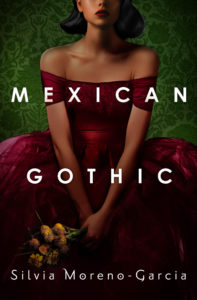
Silvia Moreno-Garcia, Mexican Gothic
(Del Rey, 2020)
There are few authors that could both create a rollicking good adventure and fill it with hallucinogenic sapient mushrooms, but Silvia Moreno-Garcia, like the mushrooms in her story, is full of unexpected talents and impossible to categorize. Mexican Gothic’s spunky heroine heads off to check on her cousin in the countryside, who has married the scion of an English family, then gone radio-silent. Of course, the truth about her cousin’s condition—and the house in which she resides—are far stranger than any reader could predict.

Paul Tremblay, The Cabin at the End of the World
(William Morrow, 2018)
A couple is vacationing with their seven-year-old daughter when they’re approached by a group of people convinced that they need the young child’s help to save the world. They quickly barricade themselves inside their cabin, but there’s no easy stopping the determined cult. While the novel shares a common plot with many a superhero narrative, it is no book for children, with a menacing tone throughout and an ending left open to interpretation.

Michael J. Seidlinger, Anybody Home?
(CLASH Books, 2022)
The home invasion novel is back, baby! And just as interested as ever in turning the voyeuristic eye back on the audience. In Michael Seidlinger’s ode to Haneke’s Funny Games, a group of intruders advised by a seasoned expert attempt to bring a family of four to the breaking point (and have a little fun while doing so). Disturbing, challenging, and f***ed up in the best way possible.
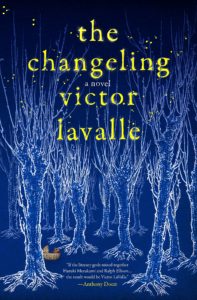
Victor Lavalle, The Changeling
(One World, 2017)
Apollo Kagwa and his wife Emma are ecstatic to be having a child, but after their newborn enters the world, Emma sinks into a deep depression and begins insisting that the child is not theirs, and that their own son has been stolen by an ancient entity. First she, then Apollo, descend into a mythical version of New York City and its small pockets of wilderness as they search for the truth about their child.

Grady Hendrix, Horrorstor
(Quirk Books, 2014)
What’s even more terrifying than an actual trip to IKEA? A horror novel set in IKEA! Just as the evil sales clerk in that one 30 Rock episode let us know, IKEA has sinister intentions, and in Grady Hendrix’s laugh-out-loud masterpiece, the store is coming alive…Also the book is presented like an IKEA catalogue, so, brilliant.
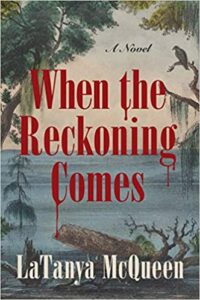
LaTanya McQueen, When the Reckoning Comes
(Harper Perennial, 2021)
Murder at a plantation wedding!!! Because anyone who chooses to have and/or attend a plantation wedding deserves what’s coming to them (except for McQueen’s heroine, of course). As LaTanya McQueen’s blistering novel begins, Mira is returning to her hometown for her best friend’s wedding, but the ceremony is happening at an antebellum mansion with some (to put it mildly) unsavory history (like every. other. plantation. Seriously, don’t have your wedding at a freaking monument to inequality). When night falls, the ghosts decide to crash the reception—and they are not happy.
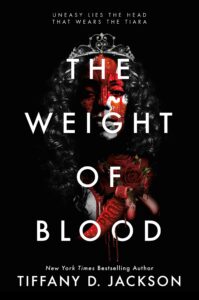
Tiffany D. Jackson, The Weight of Blood
(Katharine Tegan Books, 2022)
Tiffany D. Jackson takes the already brilliant story of Carrie and turns it into a commentary on American racism in this perfect social thriller. Maddy Washington is mousy, frequently bullied, and passing as white. When her mixed parentage becomes known to the school, the bullying turns into outright racism. Meanwhile, Maddy’s school has held two proms—a Black prom and a white prom—since the 1960s, and the bad press from videos of racist incidents surfacing convinces a popular white girl with a Black boyfriend to propose integrating the prom. Because this book is based on Carrie, we all know what happens at the prom…but how do they get there? Jackson blends old and new elements impeccably for what might be the most entertaining and thought provoking work of the season.
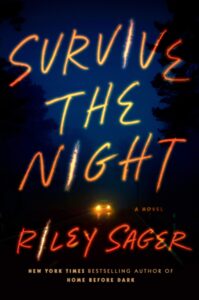
Riley Sager, Survive the Night
(Dutton, 2021)
I know, this one’s a bit more of a straight-up thriller, but it has horror elements, okay? In Riley Sager’s ode to Shadow of a Doubt, lead character Charlie is using a ride-share board to find her way home in a hurry, only to find the ride of her life waiting for her, as she begins to suspect the stranger driving may be the campus serial killer who killed her closest friend. The twists and turns in this one aren’t only on those winding country roads (sorry, couldn’t resist).
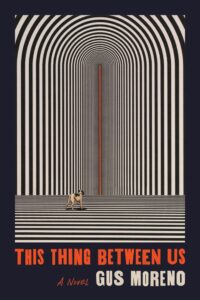
Gus Moreno, This Thing Between Us
(MCD, 2021)
In this beautiful portrait of grief, Gus Moreno’s narrator is literally haunted by his dead wife via their Alexa-like device. A small, moving, and devastating novel.
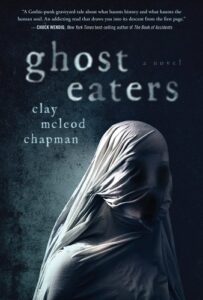
Clay McLeod Chapman, Ghost Eaters
(Quirk, 2022)
Another innovative take on grief horror, this one involves a street drug called Ghost that allows the taker to communicate with those that haunt them. Because this takes place in the South, there are far more than just personal ghosts ready to appear.

Gretchen Felker-Martin, Manhunt
(Tor Nightfire, 2022)
This may be the best apocalypse novel ever written, and certainly the only “future without men or women” book to evade the traps of gender essentialism in favor of a more nuanced approach that understands gender and sexuality as a spectrum. In Manhunt, a near-future disease has wiped out men, and transwomen survive through keeping testosterone levels down while TERFs lead crusades attempting to unmask those they’ve deemed threats to the community. J. K. Rowling dies in this book. It’s amazing.

V. Castro, Queen of the Cicadas
(Flame Tree Press, 2021)
La Reina de las Chicharras, or the Queen of the Cicadas, is just an urban legend meant to scare children—or is she? Belinda Alvarez is back in Texas for her best friend’s wedding and not particularly happy about it (as anyone who must visit Texas or heaven forbid live there like this editor is wont to feel). Soon, she gets another reason to be less than pleased: the beautiful wedding venue is also the site of the brutal murder that gave birth to the legend of La Reina, and the Queen of the Cicadas is back for more vengeance.
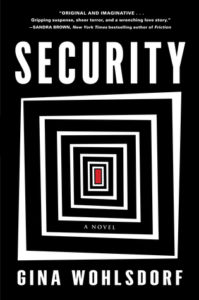
Gina Wohlsdorf, Security
(Algonquin, 2016)
Security is so cool. In this ode to Daphne du Maurier and slasher fiction, two killers attack the small staff of a magnificent hotel on the eve of opening. The story is narrated via security camera, cleverly framing and obscuring in turn, as Security’s heroine fights for love and her life on so many small screens.
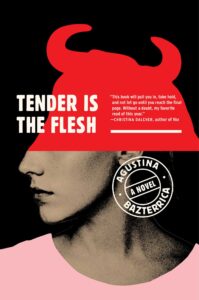
Agustina Bazterrica, Tender Is the Flesh
Translated by Sarah Moses
(Scribner, 2020)
In this world, it’s not just Armie Hammer—everyone’s into cannibalism! All the animals have been killed off in a vast purge blamed on disease, even beloved pets (causing some people to go mad with grief), and now humans are bred for the slaughter. There’s even a new movement called Death of a Thousand Cuts. After all, the best meat is fresh meat, cut off one sliver at a time…
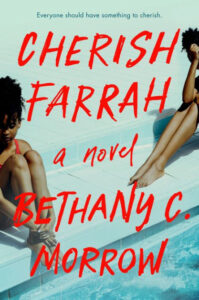
Bethany C. Morrow, Cherish Farrah
(Dutton, 2022)
Cherish Farrah is a stunning one-two punch of social horror and psychological thriller. When Farrah’s family loses their home, they face a stark choice for their daughter: either bring her with them to a new job in a new state, or leave her to stay with her best friend Cherish in their wealthy country club community. Compared to Farrah’s hard-edged parents, Cherish has the kindest, most loving parents imaginable, but do they really love Farrah the way they love their own daughter? Or is Farrah just playing a bit part in the Story of Cherish?

P. Djèlí Clark, Ring Shout
(Tordotcom, 2020)
You gotta have a novella on a list like this! After all, the novella has stayed relevant in horror and scifi long after other genres stopped caring for the short form. And at 185 pages of lean, mean prose, Ring Shout is one of the best and tightest novellas in recent memory. In 1920s America, the Ku Klux Klan are literal monsters, morphing from humans into Lovecraftian creatures with six eyes and sharp claws, and they’re hunted by a scrappy group of Black and Indigenous women, one with a magic sword. The Birth of a Nation is a work of sorcery intended to spark hate, but there’s just as much magic in those working against its terrible message. A brilliant and unfortunately relevant novel.

















